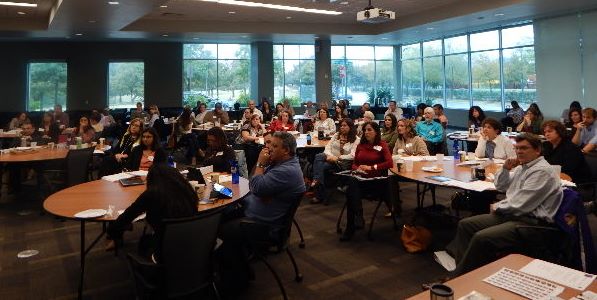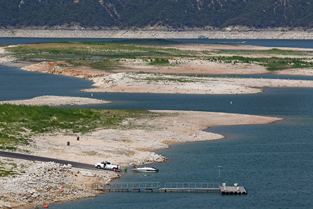
On the morning of the November Essential Class day, I walked out the front door of my apartment to encounter a steady drizzle. “Ugh,” I thought, totally disgusted.
You see, I’ve always had this problem with rain. I find it gross, an annoyance, an unwanted interruption in my daily life. When I express this sentiment to others, I inevitably receive an expected response: “But we need it…”
“Of course we need it,” I reply. “I know we need it…but that doesn’t mean I have to like it.”
But, in the middle of a Texas drought that may be more substantial than the worst on record, maybe it’s time that I learn to truly appreciate it.
November’s class was focused on the natural environment. And, let’s be honest, the natural environment has never been my issue. Yes, I have had an appreciation for the outdoors since I was a young child. I have visited countless national parks. I went camping with my family every summer. I have fond memories of white-water rafting with a group of friends as a teenager. Yet, despite my experiences, conservation and sustainability have never been issues with which I’ve connected. And so, even though I have quickly come to look forward to our monthly class days like a young child anticipating Christmas morning, as I made my way through Austin morning rush-hour traffic, I could feel the apprehension building within me, expecting to be unengaged, uninterested, and potentially even bored by this particular issue. Don’t you just love it when you’re wrong? I do. Throughout the day, I found myself connected to and concerned about many of aspects of the issue that we addressed. The natural environment is obviously a vast subject, and so, with the limited time we had, most of the day was focused on the water concerns we have here in Austin: the seriousness of our current drought as well as potential mitigation strategies.
The drought of record in Texas lasted from 1947 to 1957, punctuated by a flood in 1952 wherein Lake Travis rose by a dramatic 57 feet in 14 hours and after which the drought resumed for the next 5 years – proof that one massive rainfall isn’t the cure to a years-long drought. So, in our current predicament, what can we do now besides pray for more rain? We were blessed to have multiple experts join us in discussion about strategies, everything from conservation to mining new sources for water: new reservoirs, ground water, used water reclamation, and desalination. During the course of the day, 2 major themes emerged: the interconnectedness between humans and nature and the necessity for the community at large to get involved in the discussion.
Humans need nature to thrive just as much as nature needs human support.
For example, studies have shown that hospital patients heal faster when they have direct access to the outdoors. Children who interact with nature on a regular basis are happier, healthier, and smarter. Knowing this, it is essential that we all join the conversation regarding how our daily lives impact and are impacted by the environment. Education and communication are essential in continued forward movement on environmental issues. Join the conversation. Make your voice heard.
The highlight discussion of the day for me actually had to do with our positive leadership capacity of the month: purpose. Purpose is essential in being a leader. One of my favorite quotes from the day was “People don’t buy into what you are doing. They buy into why you are doing it.” Helen Keller also once said, “True happiness is not attained through self-gratification, but through fidelity to a worthy purpose.” While I feel the need to meditate on it more substantially, I know that my authentic purpose has something to do with process efficiencies. Improving processes to optimal efficiency is something that I naturally do in all of my roles. The day’s focus on the natural environment inevitably led me to the question, “Why have I not felt a connectedness to these environmental issues?” which was quickly followed by my response, “Because I haven’t seen opportunities where I can utilize my personal purpose for process efficiency improvements within those issues.”
And, you know what? That’s ok. It’s ok that every issue isn’t my issue. It’s great that we all have different purposes, different things we are drawn to do and are naturally good at. So just because the natural environment isn’t an issue to which I’m naturally drawn doesn’t mean that I should completely shove it aside and ignore it. And it doesn’t mean that I’m not supportive of those who actively work to address environmental issues on a daily basis. Ultimately, the natural environment is something that impacts us all and about which we all need to care. Consequently, on the day after our November class meeting, as I sat in my apartment writing this post and listening to the torrential downpour outside, rather than thinking about how inconvenient and gross the rain was, instead, I was grateful for it. I have a better understanding of how this storm may help to alleviate some of the stressors we are currently dealing with as a community. We do indeed need this storm and many more like it. And maybe someday, I’ll even learn to love the rain.
Lisa Filemyr is currently in the Essential Program. For more information on Essential Program, click here.

